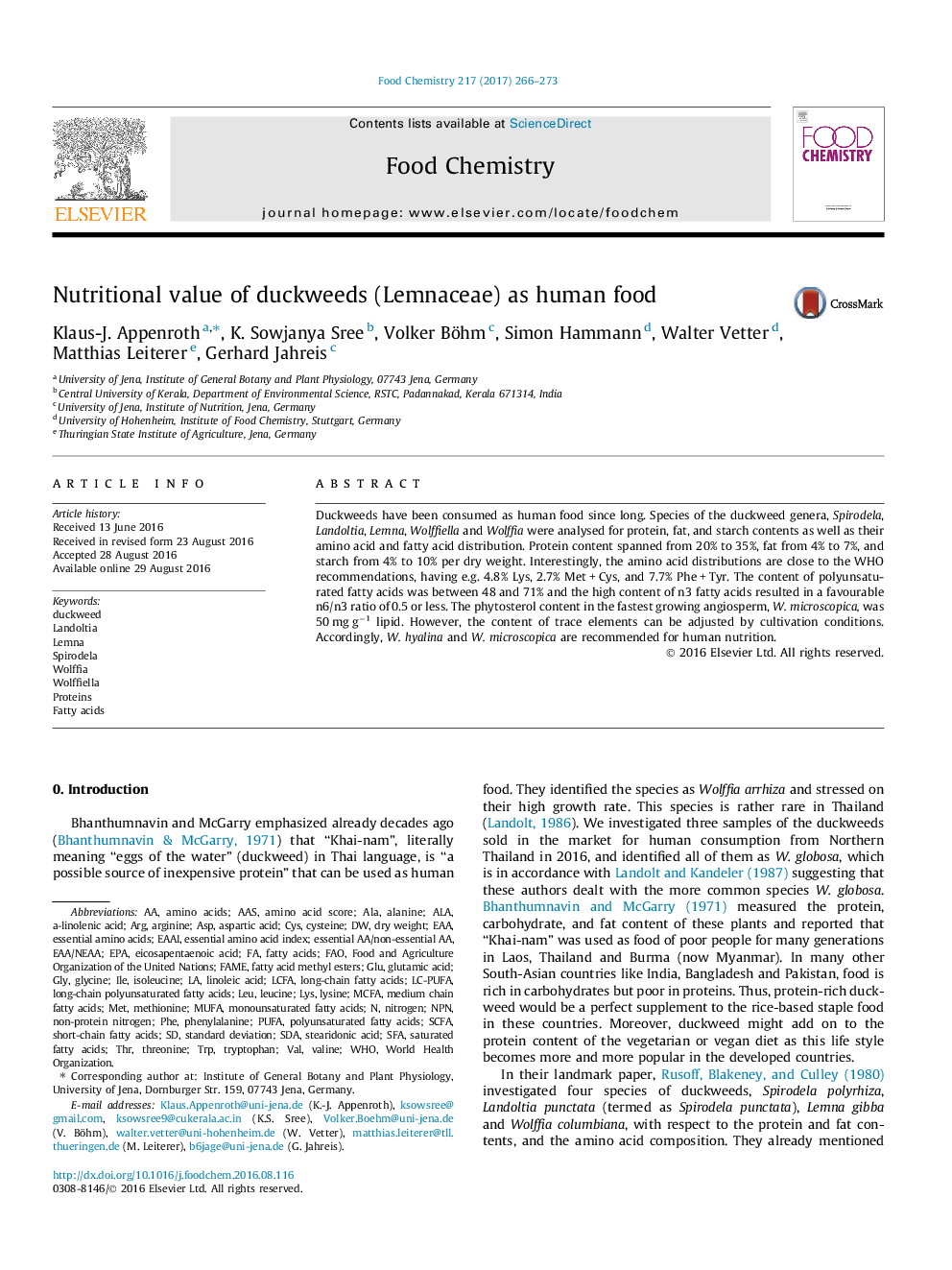| کد مقاله | کد نشریه | سال انتشار | مقاله انگلیسی | نسخه تمام متن |
|---|---|---|---|---|
| 1184753 | 1492075 | 2017 | 8 صفحه PDF | دانلود رایگان |
• Duckweeds contain 20–35% protein, 4–7% fat, 4–10% starch per dry weight.
• Proteins constitute 4.8% Lys, 2.7% Met + Cys, and 7.7% Phe + Tyr.
• 48–71% of fat are polyunsaturated fatty acids, the n6/n3 ratio is 0.5 or less.
• Mineral content can be easily manipulated by the composition of the nutrient medium.
• Wolffia microscopica and Wolffiella hyalina are desirable as human food.
Duckweeds have been consumed as human food since long. Species of the duckweed genera, Spirodela, Landoltia, Lemna, Wolffiella and Wolffia were analysed for protein, fat, and starch contents as well as their amino acid and fatty acid distribution. Protein content spanned from 20% to 35%, fat from 4% to 7%, and starch from 4% to 10% per dry weight. Interestingly, the amino acid distributions are close to the WHO recommendations, having e.g. 4.8% Lys, 2.7% Met + Cys, and 7.7% Phe + Tyr. The content of polyunsaturated fatty acids was between 48 and 71% and the high content of n3 fatty acids resulted in a favourable n6/n3 ratio of 0.5 or less. The phytosterol content in the fastest growing angiosperm, W. microscopica, was 50 mg g−1 lipid. However, the content of trace elements can be adjusted by cultivation conditions. Accordingly, W. hyalina and W. microscopica are recommended for human nutrition.
Journal: Food Chemistry - Volume 217, 15 February 2017, Pages 266–273
